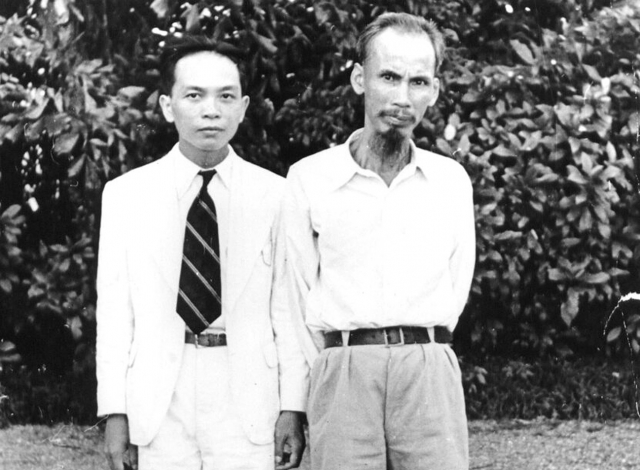Developments in Indochina after World War II

Hồ Chí Minh & the rise of an independence movement
French Indochina, officially known as the Indochinese Union, was a grouping of French colonial territories in Southeast Asia until its demise in 1954. It comprised Cambodia, Laos (from 1899), the Chinese territory of Guangzhouwan (from 1898 until 1945), and the Vietnamese regions of Tonkin in the north, Annam in the centre, and Cochinchina in the south. The capital for most of its history (1902–1945) was Hanoi; Saigon was the capital from 1887 to 1902 and again from 1945 to 1954.
In this podcast Dr Aurélie Basha i Novosejt (University of Kent) examines the early nationalist movements in Indochina, the impact of World War II, the emergence of Ho Chi Minh and the Viet Minh, the First Indochina War and the consequences of the Battle of Điện Biên Phủ.
1. How was the government of French Indochina administered before World War II? What kind of nationalist movements had existed before the 1940s?
2. What was the impact of World War II on Indochina? How did it affect Vietnamese perceptions of the French?
3. How did the French colonial government return to Indochina after World War II? Was it inevitable?
4. What led to the popularity of Ho Chi Minh and the rise of the Viet Minh?
5. How did the first Indochina war start and develop? How was the conflict seen around the world within the context of the Cold War?
6. What was the significance of the Battle of Dien Bien Phu?
7. What were the outcomes of the Geneva Conference 1954? To what extent did it set the stage for the conflict that was to come?
8. How have historian’s interpretations of this period of Vietnam’s history changed over time? What are the areas of research are historians currently working on?
In order to access the full content of the podcasts please Login or Join the HA.

